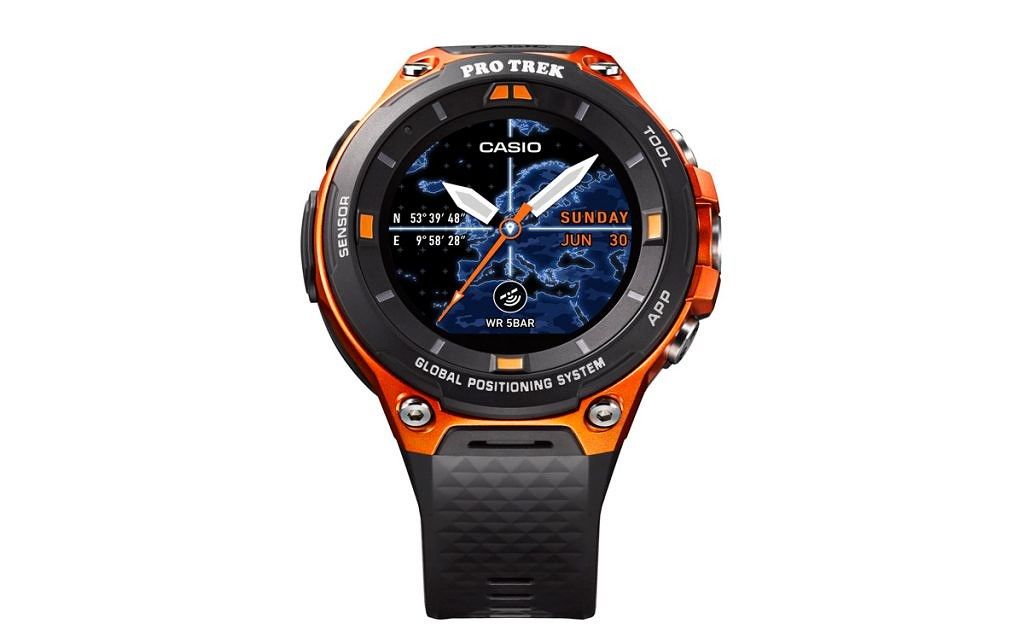Android Wear did not have an exciting 2016 due to diminished consumer interest leading to major companies holding off on major smartwatch releases. All of that hopefully changes this year with the launch of Android Wear 2.0. While Motorola will not be releasing a new smartwatch based on Android Wear 2.0, Casio remains committed to the Android smartwatch and will be releasing a new rugged smartwatch known as the WSD-F20.
The Casio Pro Trek WSD-F20 is the next generation rugged smartwatch from Casio and adopts a similar rugged design compared to its predecessor, the WSD-F10. Since the smartwatch expected for outdoor usage, Casio has added a protective bezel and button guards on the watch, which lend to its MIL-STD-810G rating. You also get the dual-layer display from the predecessor -- monochrome mode for high visibility and low power consumption and color mode for smartwatch functionality.
The new smartwatch also comes with a low-power GPS sensor and color maps which can be downloaded for offline use. This, in addition to its new Android Wear 2.0 operating system, will certainly give the watch a unique appeal in the current market. Casio has also added applications for tracking and assisting outdoor activities such as hiking, cycling, and fishing among other interesting additions -- an application called Location Memory adds in location markers with notes through speech recognition while "Moment Setter" allows you to pre-program certain notifications. Casio will also add in more original watch faces that make use of the low power GPS and offline maps.
The Casio Pro Trek WSD-F10 is an unapologetically niche product geared specifically towards outdoor use, but it also is the first smartwatch to be announced with Android Wear 2.0. Interestingly, the predecessor Pro Trek smartwatch will also be updated to the latest Android Wear 2.0 OS. Casio seems to be banking heavily on Android Wear 2.0 to not disappoint, but that is a question left unanswered until the OS leaves its beta state and reaches widespread use.


